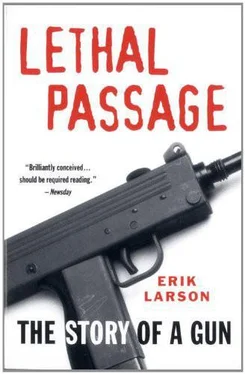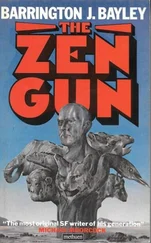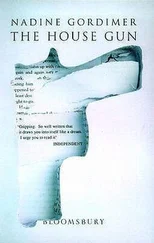Before the act was finally passed, Representative Volkmer called it “the second most important step in the history of American gun owners. The first was the Second Amendment to the U.S. Constitution.” Representative Hughes said the bill “would elevate gun dealers to a special level of privilege never before seen in the law.”
ATF got the message. First came Congress’s punitive $10-million budget cut, then ATF’s brush with dissolution, and finally McClure-Volkmer. “I don’t know what kind of syndrome it is when you get batted over the head repeatedly,” Rex Davis told me, “but it certainly turns your attention away from the direction you were going.”
In following years, ATF used its mandate as the nation’s firearms cop to concentrate more and more resources on mainstream investigations of narcotics gangs, terrorist groups, and motorcycle gangs. From 1988 through 1992, ATF’s law-enforcement divisions ranked narcotics crime as their top priority, followed by violent crime committed with firearms. “These are safe activities, and sexy activities in terms of public perception,” Davis said. “With dealers, they’ve had their hands slapped several different ways. So it’s a natural reaction.”
♦ ♦ ♦
ATF remains less than enthusiastic about policing the vast dealer network. From 1975 through 1990, ATF revoked an average of ten licenses a year. The low was in 1978, with none, the high in 1986, with twenty-seven. This rate seems downright skimpy given the sheer numbers of licenses and the rate of violations discovered whenever ATF’s skeleton crew of inspectors does its routine compliance audits. In 1990, for example, inspectors conducted 8,471 of these routine inspections; they found violations in 90 percent of them.
But revocation can be a tortuous process, as ATF found when in 1989 it at last moved to revoke the license of a Michigan dealer doing business as Al’s Loan Office. In arresting and prosecuting Curtis Williams, the man who accompanied Nicholas Elliot to Guns Unlimited, the bureau acted with breathtaking speed; in contrast, its dealings with Al’s Loan show remarkable forbearance.
In ten inspections, beginning in 1976, ATF inspectors found repeated violations of ATF record-keeping regulations, many of them serious and the kind that could have put guns into the hands of felons and traffickers. Al’s Loan had failed to keep accurate records in a separate bound book of all its firearm acquisitions and sales. It had failed to make sure that customers properly completed form 4473. Moreover, the inspectors found, Al’s Loan had sold guns to people prohibited by federal law from buying them.
Far from whisking officials of Al’s Loan off to jail, ATF inspectors patiently sat down with them to instruct them in the proper recordkeeping procedures, as they did following inspections in 1976, 1978, 1979, 1980, and 1981. After a 1982 inspection, the bureau at last flexed some muscle. It wrote the pawnshop an admonitory letter, setting out the dealer’s violations. The letter, the first phase in the carefully choreographed dance ATF must go through in trying to revoke a dealer’s license, warned Al’s Loan that “your license is contingent on your compliance with law and regulations and that continued violations may lead to revocation of your license.”
ATF agents inspected Al’s records again in 1983 and again found the same kinds of violations. Again ATF wrote an admonitory letter.
The violations continued. Three more inspections took place, in 1985, 1987, and 1988, each followed by another admonitory letter.
At last ATF lost patience. On March 31, 1989, thirteen years after inspectors first discovered violations at Al’s Loan, the bureau revoked its license.
The dealer protested. Under provisions governing the revocation process, the dealer requested a hearing before an ATF hearing officer. An attorney for Al’s Loan argued the dealer should be allowed to keep his license because he had cleaned up his records. The attorney then presented a sample. During a recess, however, ATF inspectors examined these records and immediately found violations.
One of the inspectors testified, however, that the records did show signs of an effort to improve; he seemed more than willing to shrug off more than a decade’s worth of violations. Al’s Loan had testified that it had set up a new computer system to help manage its records and had fired employees who failed to keep good records of firearms transactions. “So there are some problems,” the inspector testified, “but the records as presented today do show a decent and sincere attempt by the licensee to try and change his record-keeping system to meet the regulatory requirements.”
The hearing officer was not moved, however, and recommended revocation, concluding: “The licensee was plainly indifferent to the regulatory requirement for conducting his firearms license operations and therefore willfully violated the regulations.”
This recommendation was then passed along for the required review by the ATF regional director responsible for Michigan. The director agreed. The bureau revoked the license effective September 18, 1989.
This time Al’s Loan protested to federal court, where it tried to win an injunction to stop the revocation. The judge, however, argued that Al’s Loan may indeed have improved its records, but for the twelve years preceding the supposed improvement had “displayed flagrant, willful indifference” to the ATF rules. In his May 7, 1990, opinion affirming the revocation, the judge wrote: “Selling and pawning firearms is a privilege granted by the federal government and is not a right of any person…. Furthermore, the Court notes that we live in a very violent society where careless and violent individuals use guns to kill and maim innocent people. Those who distribute guns must be held accountable as they are the first step in preventing lawless individuals from obtaining guns.”
At last Al’s Loan was out of the firearms business—but the process had taken fifteen years.
♦ ♦ ♦
ATF publicly argues that the vast majority of its FFLs are honest, law-abiding citizens, and that only “one or two” go bad. Even if true, the bureau’s argument would hardly be comforting given the speed with which guns migrate. A single illicit dealer can put hundreds, perhaps thousands, of weapons into the hands of would-be killers before the guns are detected by the ATF tracing network.
The fact is, many dealers do operate illegally. In fiscal 1991, ATF considered licensees to be suspects in 139 law-enforcement investigations.
The case of one Baltimore dealer demonstrates both how much damage a single maverick dealer can do, and how little time it takes for guns diverted from the legitimate distribution network to be used in crime.
On July 1, 1989, ATF issued a federal firearms license to Carroll L. Brown, then a twenty-eight-year-old postal worker and father of three kids. Initially, at least, Brown seemed intent on operating a formal, commercial gun store, going so far as to rent commercial space in an office building in Reisterstown, Maryland. A few months later, however, he stopped paying rent and broke his lease. By April the following year he had begun selling high-powered handguns from his home and from his car, without asking buyers to fill out required state and federal documentation. He advertised his wares in at least six classified ads in the Baltimore Sun . (In 1993, the Sun , recognizing the dangers of undocumented private sales of handguns, stopped accepting classified ads for firearms.)
The guns of Carroll Brown quickly fell into the wrong hands. Beginning September 20, 1990, Baltimore police began discovering Brown’s guns in the course of routine calls and investigations of homicides and drug trafficking. On October 26, Baltimore officers arrested a man wearing a bulletproof vest and carrying an unregistered Astra .380 pistol. Det. Richard Young, then a member of Baltimore’s Handgun Enforcement Arrest Team (HEAT), first traced the vest and learned it had been shipped to Brown from an Orlando, Florida, distributor only the day before by the United Parcel Service. The distributor also told Detective Young that it had shipped Brown two guns. The detective next checked with the distributor’s parent company, RSR North of Rochester, New York, and learned it too had shipped guns to Brown—fifteen in all between July and November.
Читать дальше








![Ричард Деминг - Whistle Past the Graveyard [= Give the Girl a Gun]](/books/412176/richard-deming-whistle-past-the-graveyard-give-t-thumb.webp)



